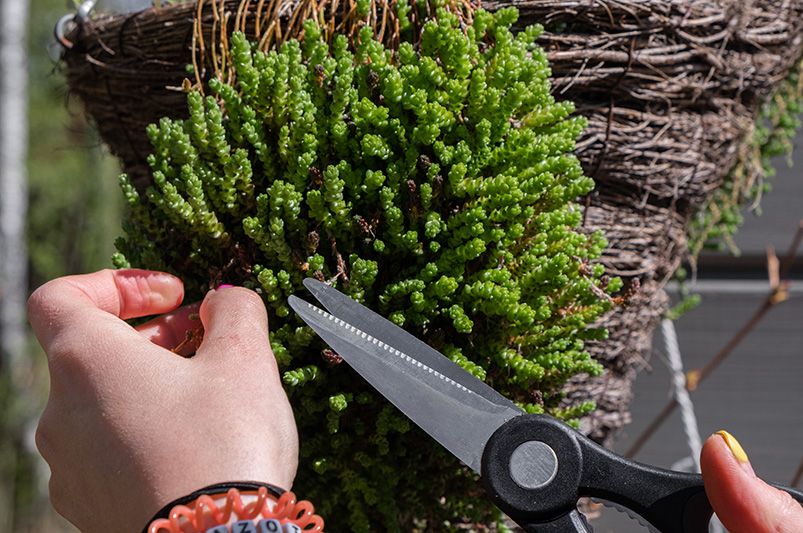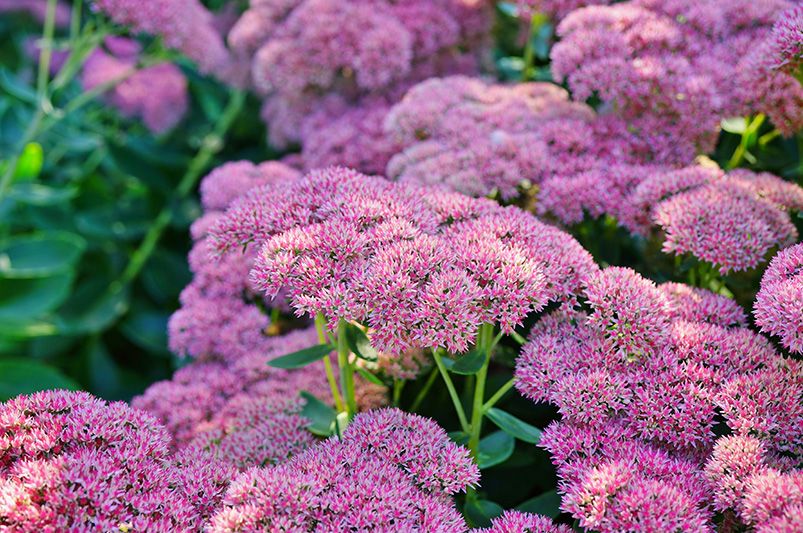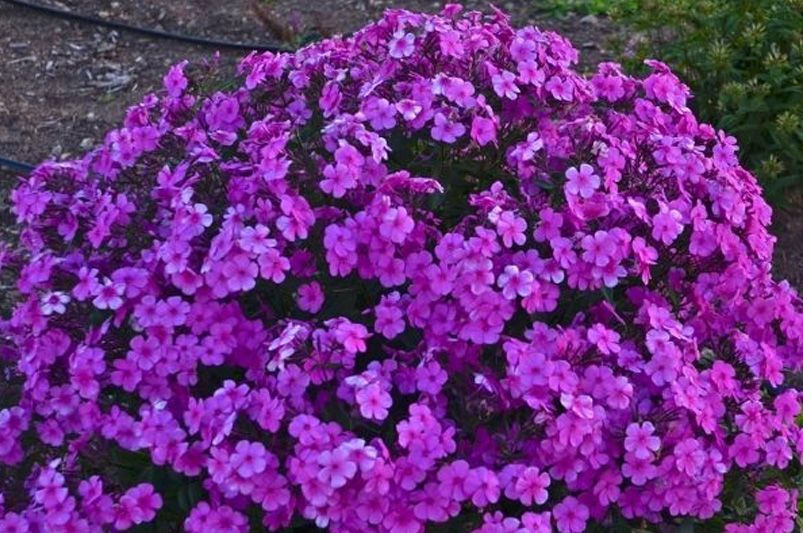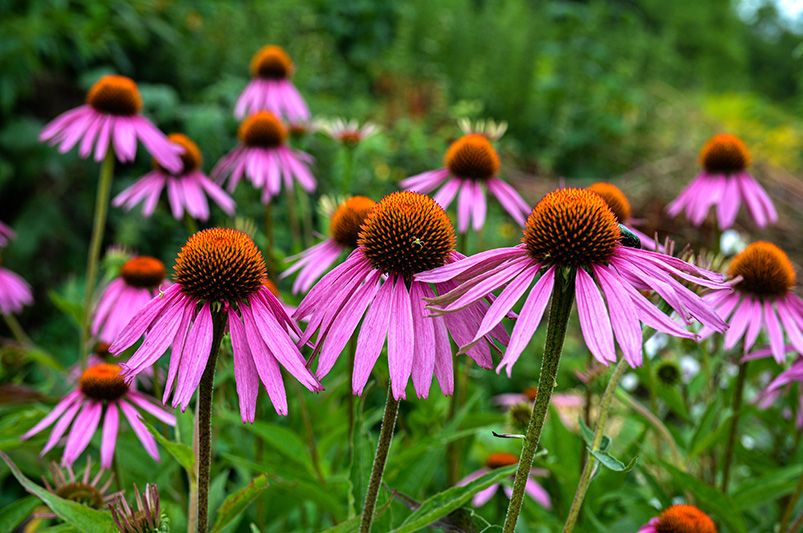
Extend Your Garden’s Flower Power with the Chelsea Chop
Published: 11/06/2025 | Updated: 11/06/2025
If your perennials tend to go tall, lanky, and short-lived on the bloom front, it’s time to meet your new favorite pruning method: the Chelsea Chop. Named after the famous Chelsea Flower Show in late May—right around the time you should grab your shears—this simple trimming technique can totally transform your garden game.


By selectively cutting back certain perennials by one-third to one-half, you’ll not only extend their flowering period but also encourage a bushier, more compact growth habit. Less flopping, more flowers, and a tidier garden? Yes, please.
Here at ShrubHub, we believe a great garden starts with the right know-how. That’s why we publish free weekly blog articles filled with expert tips, seasonal advice, and ideas to keep your outdoor space thriving year-round—no subscriptions, no spam, just better gardening.
Ready to learn the how, why, and when of the Chelsea Chop? Let’s get started.
What Is the Chelsea Chop?
The Chelsea Chop is a simple pruning technique used by gardeners to control the size, shape, and blooming time of certain perennials. The method involves cutting back one-third to one-half of the plant’s growth—usually in late May—to encourage bushier growth and staggered flowering.
But why is it called the Chelsea Chop?
The name comes from the world-famous Chelsea Flower Show in London, which takes place in late May—the perfect time to perform this pruning trick. Seasoned gardeners use this timing as a natural reminder to grab their shears and give select plants a well-timed trim.
The beauty of the Chelsea Chop lies in its versatility.
-
You can chop the entire plant to delay flowering and create a shorter, fuller look.
-
Or you can cut just some of the stems, which spreads out the blooming season and adds layers of interest to your garden.
It’s not a complicated process—any home gardener can do it—but it offers professional-looking results that can dramatically improve both the health and appearance of your plants.
If you want a garden that looks lush, balanced, and blooms beautifully all season long, the Chelsea Chop is a low-effort, high-reward technique to add to your gardening toolkit.
Why Gardeners Love the Chelsea Chop
The Chelsea Chop isn’t just a clever name—it’s a game-changer for gardeners who want to keep their landscapes looking vibrant, controlled, and effortlessly beautiful. Here’s why this technique has become a beloved staple among home gardeners and professionals alike.
1. Extends the Blooming Period
One of the biggest advantages of the Chelsea Chop is its ability to prolong the flowering season. By cutting back select plants in late May, you delay their blooming schedule, creating a natural succession of flowers. This staggered timing means you won’t have all your plants blooming at once and fading quickly—instead, you’ll enjoy a more continuous display of color throughout the summer and sometimes into fall.
For gardeners who love a dynamic, ever-changing landscape, the Chelsea Chop is an easy way to make that happen without constantly planting new flowers.
2. Encourages Compact, Sturdy Plants
Many perennials tend to grow tall and leggy, especially in nutrient-rich soil or shaded areas. Without intervention, these plants can look spindly or weak, leaving your garden feeling overgrown and unbalanced.
The Chelsea Chop promotes bushier, sturdier growth, resulting in fuller, more robust plants. When you trim the tops, the plant’s energy is redirected into side shoots, encouraging dense branching and creating a more compact shape that holds itself up naturally.
3. Prevents Plants from Flopping Over
Tall, top-heavy plants often flop under their own weight, especially after heavy rain or wind. This can leave your garden looking messy and untidy—and may even damage the plants.
By performing the Chelsea Chop, you can control plant height and reduce the risk of flopping. Shorter, bushier plants are more self-supporting and won’t lean or collapse as easily, helping your garden maintain its structural integrity throughout the season.
4. Reduces the Need for Staking Tall Perennials
Staking can be time-consuming, visually distracting, and sometimes tricky to get right. Luckily, the Chelsea Chop can eliminate or significantly reduce the need for staking by naturally keeping plant heights in check.
When you cut back in late spring, your plants grow more compactly and require less external support. This saves you time, effort, and the hassle of mid-season adjustments, all while preserving the clean, natural look of your garden.
5. Great for Maintaining a Polished, Well-Kept Landscape
A well-designed garden isn’t just about what you plant—it’s about how you maintain it. The Chelsea Chop is an easy, proactive way to keep your garden looking tidy and balanced without constant intervention.
When combined with thoughtful garden design—like ShrubHub’s custom landscape plans—the Chelsea Chop can help ensure your plants grow in proportion to your space, complement each other, and create an overall polished appearance.
Whether you're curating a cottage garden, a formal landscape, or a modern outdoor retreat, this method is a simple yet powerful tool to enhance the beauty and structure of your yard.

When to Do the Chelsea Chop
Timing is everything when it comes to the Chelsea Chop. While the method is famously linked to late May—coinciding with the Chelsea Flower Show—the exact timing can vary based on your local climate and growing conditions.
The Classic Timeline: Late May
For most gardeners, the last week of May is the sweet spot for performing the Chelsea Chop. By this time, many perennials have developed enough growth to benefit from pruning without losing their ability to recover and thrive through the rest of the season.
Think of it as giving your plants a strategic haircut just before summer kicks into high gear.
Adjust for Your Region and Climate
Not every garden follows the same schedule. If you live in a warmer region, plants may mature earlier, which means you could start the Chelsea Chop a bit sooner—possibly in mid-May.
In colder climates, you might want to wait until early June when plants are more developed but haven’t yet started to set buds.
Pro Tip: Watch Local Frost Dates and Plant Growth
A reliable rule of thumb:
-
Start after the last frost date for your area. You don’t want to encourage new growth that could be damaged by lingering cold snaps.
-
Look for plant height and stem development. Plants should be at least 12-18 inches tall and actively growing before you start cutting.
If you’re unsure, track the growth patterns in your garden or reach out to local garden centers for region-specific advice.
Bonus: Stagger Your Chops for Continuous Blooms
For an extra layer of flowering control, you can chop some plants or stems earlier and some later. This trick helps create a rolling wave of blooms that lasts well into the summer, keeping your garden looking vibrant and fresh without the need for constant replanting.
Which Plants Benefit from the Chelsea Chop?
Not all plants are ideal candidates for the Chelsea Chop, but several popular perennials respond beautifully to this technique. The following plants are known for becoming bushier, sturdier, and producing prolonged blooms when trimmed at the right time.
Better yet, you can find premium-quality varieties of these plants in ShrubHub’s carefully curated collection—perfect for building your dream garden.

Sedum 'Autumn Joy'
Sedums are classic Chelsea Chop stars. By cutting back Autumn Joy Sedum, you can encourage a sturdier, more compact plant that resists flopping later in the season. The chop also helps extend its gorgeous late-summer blooms.

Phlox 'Cloudburst Tall Cushion'
Phlox can sometimes grow tall and leggy, making them prone to collapsing. A well-timed trim keeps Cloudburst Tall Cushion Phlox neat and vibrant, with bushier growth and blooms that last longer into the season.

Echinacea 'Sunseekers Rainbow'
Coneflowers like Echinacea 'Sunseekers Rainbow' respond exceptionally well to the Chelsea Chop. Cutting back these plants promotes denser growth and staggered blooms, giving your garden waves of beautiful color.

Black-Eyed Susan 'American Gold Rush'
The bold yellow flowers of Black-Eyed Susan (Rudbeckia) 'American Gold Rush' can brighten any garden, and a mid-spring chop helps keep the plant compact, sturdy, and less likely to sprawl. It’s a perfect way to enjoy a longer flowering season.

Aster 'Woods Pink'
Woods Pink Aster is a must-have for late-season color. Using the Chelsea Chop on asters delays flowering and encourages lush, controlled growth, which means you’ll enjoy a cleaner, more polished garden well into autumn.
ShrubHub Tip:
Use the Chelsea Chop not only to extend blooming but also to manage plant heights and maintain balance in your garden design. Keeping your plants proportionate is key to achieving that professionally landscaped look.
How to Perform the Chelsea Chop
Mastering the Chelsea Chop isn’t complicated, but like any gardening technique, there’s a right way to do it—and a few easy missteps to avoid. Follow this step-by-step guide to confidently perform the chop while sidestepping the most common mistakes.
What You’ll Need
-
Sharp, clean garden shears for precise cuts
-
Gardening gloves to protect your hands
-
Optional: a bucket or bag for plant debris to keep your garden tidy
Step 1: Decide How Much to Cut
The typical Chelsea Chop involves cutting back one-third to one-half of a plant’s height. This reduction encourages bushier growth, sturdier stems, and delayed blooms.
-
Full Chop: Trim the entire plant evenly for a shorter, more compact growth habit.
-
Selective Chop: Cut only some stems (usually the front or side ones) to stagger the blooming period and create layers of flower heights.
Step 2: Make Clean, Angled Cuts
Use sharp shears to make clean, angled cuts just above a leaf node or bud. Clean cuts heal faster and reduce the risk of disease. Be sure to sanitize your shears between plants to prevent cross-contamination.
Step 3: Stagger Your Cuts for Continuous Blooms
For a more natural, prolonged flowering effect, try cutting back different sections of the same plant at different times. This simple trick can give you waves of blooms over several weeks instead of all at once.
Step 4: Clean Up Debris
Gather any plant clippings and compost them if healthy, or dispose of them if you notice signs of disease. Keeping the area tidy helps prevent pests and fungal issues.
Common Mistakes to Avoid
Even though the Chelsea Chop is beginner-friendly, here’s what you should steer clear of:
-
Chopping Too Late:
Performing the Chelsea Chop too far into the growing season (typically after early June) may stress the plant or prevent it from reblooming altogether. Stick to the late-May window, adjusted for your local climate. -
Cutting Unsuitable Plants:
Not all plants respond well to the Chelsea Chop. Always double-check whether your plant is a good candidate before trimming. Plants with a single bloom cycle or woody stems generally won’t benefit. -
Over-Pruning:
Cutting too aggressively or removing entire stems at the base can stunt growth or limit flowering. Remember, it’s typically best to reduce by one-third to one-half—not to start hacking from the ground up. -
Cutting the Wrong Stems:
When using the selective chop method, avoid mistakenly cutting all stems from one side, which can make the plant look lopsided. Instead, stagger cuts throughout the plant for a balanced appearance.
By following these steps and avoiding common errors, you can confidently use the Chelsea Chop to create a healthier, longer-lasting, and more visually appealing garden.


